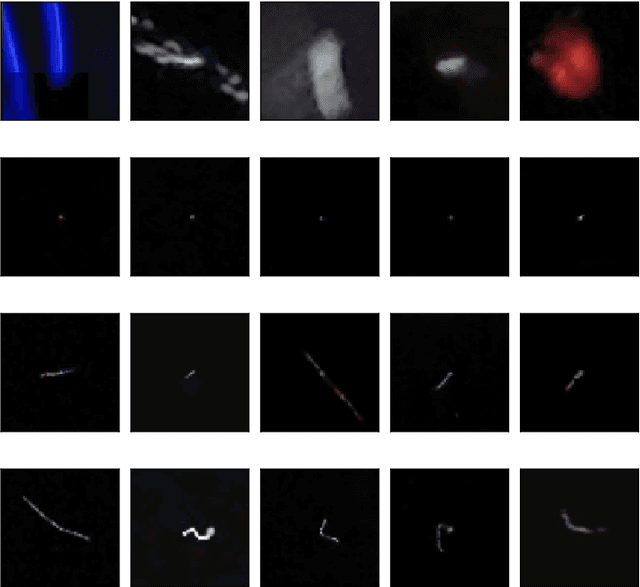Machine learning aided noise filtration and signal classification for CREDO experiment
Paper and Code
Oct 01, 2021



The wealth of smartphone data collected by the Cosmic Ray Extremely Distributed Observatory(CREDO) greatly surpasses the capabilities of manual analysis. So, efficient means of rejectingthe non-cosmic-ray noise and identification of signals attributable to extensive air showers arenecessary. To address these problems we discuss a Convolutional Neural Network-based method ofartefact rejection and complementary method of particle identification based on common statisticalclassifiers as well as their ensemble extensions. These approaches are based on supervised learning,so we need to provide a representative subset of the CREDO dataset for training and validation.According to this approach over 2300 images were chosen and manually labeled by 5 judges.The images were split into spot, track, worm (collectively named signals) and artefact classes.Then the preprocessing consisting of luminance summation of RGB channels (grayscaling) andbackground removal by adaptive thresholding was performed. For purposes of artefact rejectionthe binary CNN-based classifier was proposed which is able to distinguish between artefacts andsignals. The classifier was fed with input data in the form of Daubechies wavelet transformedimages. In the case of cosmic ray signal classification, the well-known feature-based classifierswere considered. As feature descriptors, we used Zernike moments with additional feature relatedto total image luminance. For the problem of artefact rejection, we obtained an accuracy of 99%. For the 4-class signal classification, the best performing classifiers achieved a recognition rate of 88%.
 Add to Chrome
Add to Chrome Add to Firefox
Add to Firefox Add to Edge
Add to Edge